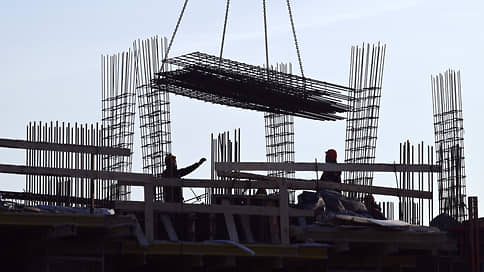The situation on the new buildings market in March 2024
[ad_1]

By resolving conflict issues with banks and gradually adapting instruments to high mortgage rates, developers managed to resume the active introduction of new supply to the market and continue to slowly index prices. The average cost of new buildings in the country’s largest regional markets increased by less than 1%. This dynamic is expected to continue in the near future, although market participants do not rule out that new decisions regarding preferential mortgages may lead to short-term surges.
The average cost of new buildings in the 18 largest regional markets of Russia (16 cities with a population of over a million, Moscow and Leningrad regions) in March amounted to 167.1 thousand rubles. per sq. m, increasing over the month by 0.6%. Such data are provided in CIAN.Analytics. Experts recall that a month ago the growth was more pronounced – 1.1%, linking the cooling with the active launch of new products. In Etazhi, the average cost of a primary offer in Russia as a whole is estimated at 128.4 thousand rubles. per sq. m. By March, according to analysts, the figure decreased by 1.75%. An apartment in new buildings in Russia, according to Avito Real Estate, now costs an average of 6.9 million rubles. Over the month, the figure increased by 0.2%, over the year – by 8.6%. Commercial Director of Yandex Real Estate Evgeniy Belokurov speaks of a decrease in the growth rate of prices for new buildings: “at the beginning of the year they increased by 2% per month, now by 1.7%.”
Most notable growth the average cost of supply in new buildings over the last month, according to calculations by CIAN.Analytics, has increased in Omsk and Krasnodar. Both indicators increased by 2.2%, to 136.2 thousand rubles. and 176.5 thousand rubles. per sq. m respectively. “Etazhi” noticed an increase of 2.9% in Chelyabinsk, up to 109.3 thousand rubles. per sq. m. Avito Real Estate saw an increase of 3.1% in Krasnoyarsk, up to 126 thousand rubles. per sq. m. At the same time in Voronezh the value, according to Etazhi, decreased by 1.8% over the month, to 116.9 thousand rubles. per sq. m.
In Moscow, according to CIAN.Analytics, the average cost of new buildings is now 350 thousand rubles. per sq. m. Over the month, the figure increased by 1.5%, over the year – by 9%. In St. Petersburg the dynamics were minus 0.8% and 8%, respectively, to 246.5 thousand rubles. per sq. m. Mr. Belokurov recalls that the markets of the largest cities are more susceptible to the influence of changed mortgage programs: “the upper credit limit is 12 million rubles. does not provide room for active demand growth.” According to calculations by Avito Real Estate, over the month, user activity in Russia as a whole decreased by 12%, year-on-year by 18.5%. Etazhi noticed a decrease in demand over the month by 5.4%.
The volume of supply in the primary market of Russia increased by 2.2% over the month, and by 20.3% over the year, says Dmitry Alekseev, head of the primary direction of Avito Real Estate.
But the dynamics are affected not only by decreased demand. The head of CIAN.Analytics, Alexey Popov, believes that resolving issues regarding fees for preferential loans led to the resumption of issuing decisions on project financing and the start of new projects. Now, in the 18 largest regional markets, he said, there are 240 thousand listings available, 11% more than at the beginning of March.
Mr. Popov adds that developers were partially able to adapt to the high cost of lending, although not all methods can take root. “Trench mortgages cause dissatisfaction with the Central Bank at the level of verbal interventions, and installment plans, which account for up to 25% of transactions, reduce the financial performance of projects,” he explains. Developers, according to the observations of Etazhey sales director Sergei Zaitsev, adhere to a disparate pricing policy: “some reduce prices, trying to realize the maximum volume, others increase them, guided by the high demand for budget lots and hoping to recoup the costs of special offers.”
Without a critical decline in sales, according to Mr. Belokurov, one should not expect a noticeable reduction in prices for new buildings.
The indicators, according to his forecasts, will remain stable. Mr. Popov does not rule out short-term price surges in the market in the event of a decision to curtail the “regular” preferential mortgage. This will lead to an increase in the activity of leaching away the available supply, he explains. But then, according to the expert, developers will again have to return to extremely restrained price indexation. Sergey Zaitsev expects that buyer activity will remain at the current level, and prices will fluctuate in the range of 1–2% per month.
[ad_2]
Source link





